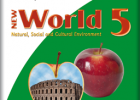Animal reproduction
In the last unit you learnt how humans reproduce sexually. Most other animals also reproduce sexually, by the fertilisation of an egg by a sperm. This involves the participation of a male and a female. However, there are some animals that do not need another individual to reproduce. These animals reproduce asexually.
Esta secuencia contiene:
-
9 actividades
-
69 recursos
-
Idioma:
- Inglés
-
Formato:
Interactivo
Secuencia didáctica
-
Didactic objectives Describe the general characteristics of sexual reproduction in animals. Understand the need for fertilisation in sexual reproduction and recognise the difference between internal and external fertilisation. [...]
-
1. Sexual reproduction and fertilisation Most animals reproduce sexually: a new individual is created when a sperm fertilises an ovum to form a zygote. [...]
-
In the last unit you learnt how humans reproduce sexually. Most other animals also reproduce sexually, by the fertilisation of an egg by a sperm. This involves the participation of a male and a female. [...]
-
Sexual reproduction in animals Most animals reproduce sexually: a new individual is created by the fertilisation of a female ovum by a male sperm. In nearly all species of animals, individuals are either male or female. [...]
-
After fertilisation, the zygote starts to divide and grow into an embryo. The embryo develops until it is ready to survive externally, and then it is born. Oviparous animals Animals that are born from an egg are called oviparous animals. [...]
-
How do young animals develop? Young animals can grow into adults in two ways: By direct development. The young look very similar to their parents. They only need to grow and change a little to become adults. By indirect development. [...]
-
Most animals reproduce by the sexual union of two individuals. However, some animals can reproduce asexually, without another individual. Part of the body of the animal develops to form a new individual. [...]
-
In the last unit you learnt how humans reproduce sexually. Most other animals also reproduce sexually, by the fertilisation of an egg by a sperm. This involves the participation of a male and a female. [...]
-
In the last unit you learnt how humans reproduce sexually. Most other animals also reproduce sexually, by the fertilisation of an egg by a sperm. This involves the participation of a male and a female. [...]
Cursos y asignaturas
-
10 años:
- Biología
- Sociología
-
11 años:
- Biología
- Sociología
-
Aún no hay comentarios, ¡comparte tu opinión! Inicia sesión o Únete a Tiching para poder comentar
La licencia digital es una autorización que permite utilizar un recurso digital de acuerdo con las condiciones legales de dicho recurso. El código que recibas una vez la hayas comprado te permitirá acceder al recurso educativo digital elegido.
Puedes consultar más información en nuestra página de ayuda.













































































¿Dónde quieres compartirlo?
¿Quieres copiar el enlace?